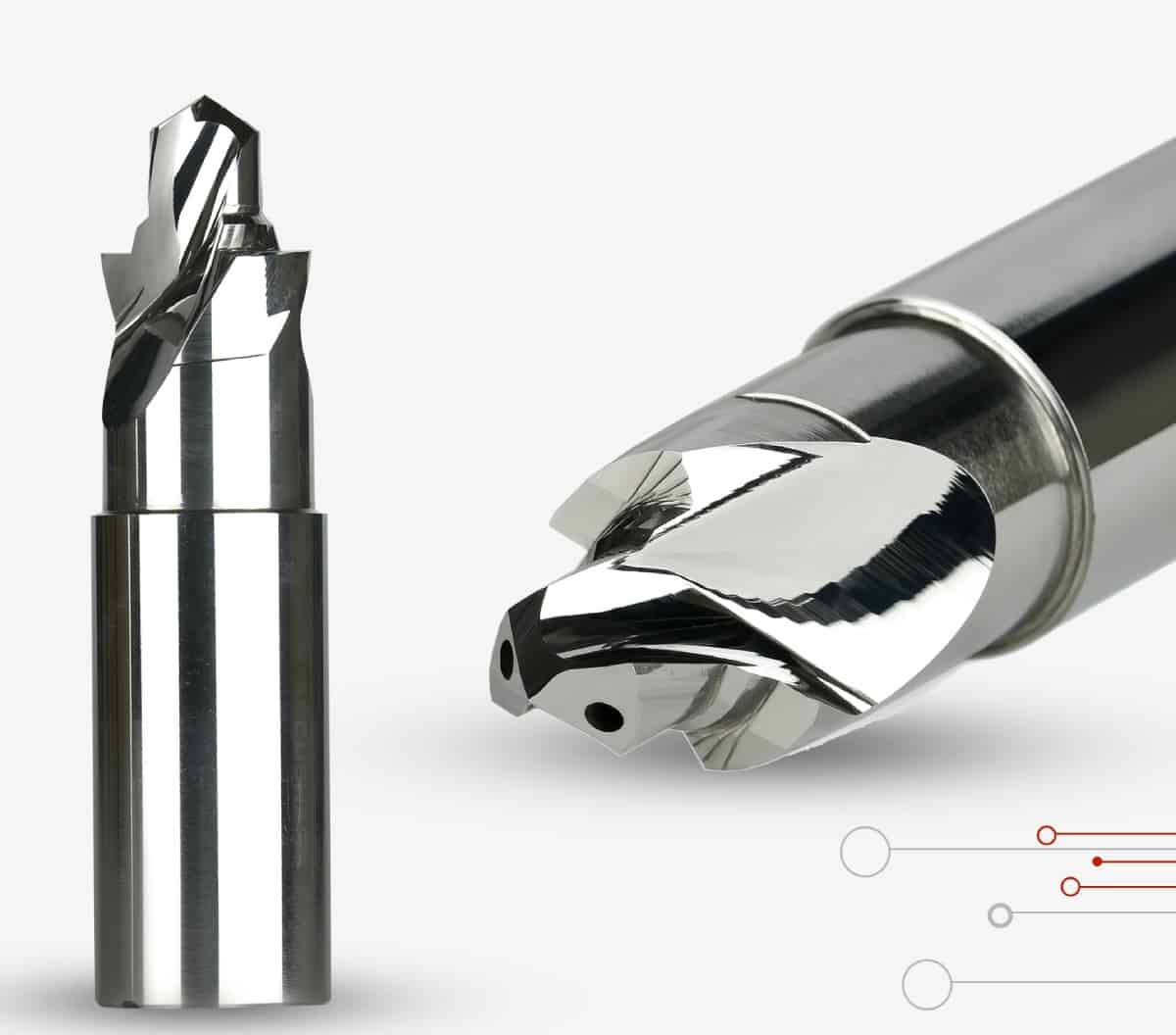Standard tooling is by its very nature general and purpose-made, while custom tools should achieve a number of objectives above and beyond those of standard tooling. A custom tool should perform better where regular tools are effective since it was designed specifically for the task at hand.
If a business uses bespoke tools, that equipment ought to enhance machining outcomes by offering the following benefits:
- Shorten the duration of the cut.
Where surface finishes are less important, some elements can be merged into a form and created in a single pass.
- Minimize the time spent on cutting.
Some procedures let you combine two or more tools. By doing this, the number of tool changes that waste time can be decreased. Moreover, it can expand the machine’s ability to store tools.
- Lengthen the total tool life.
It is possible to optimize coolant ports that do not need to be adjusted. By doing this, operator error is decreased, and the coolant flow is always directed.
- Increase effectiveness.
The cutting of inserts includes edge finishing and coating that are tailored to the material being machined. This enables an insert to operate to its full capacity.
- Cut back on part costs.
Usually, the ultimate objective is to lower the cost per component.
This is easily accomplished with custom tools that decrease cutting and non-cutting time, but there are still a few other enhancements to take into account.
- Boost the process’s dependability.
If an operator’s mistake is an issue, it could be required to design a special tool with various inserts that are only compatible with the tool’s own pocket. The possibility of mixing up tools that are so similar always exists, so the only way to tell them apart is by utilizing a loop to verify the part identification number is reduced by using different types (single edge, triangular, and dog-bone forms).
- Easy handling
It shouldn’t be hard to swap out a worn insert or index for a new cutting edge. An operator needs to be able to make a minor adjustment and press cycle start after a fresh edge has been clamped into position. It shouldn’t be necessary to use shims or have unnecessarily sophisticated application-specific tooling.
- Boost precision.
To preserve precise dimensions between two or more features that depend on one another’s placement, form tools can be ground. The accuracy of the insert is checked in some establishments. Only one dimension on the finished component needs to be checked by the operator if the distance between features is within tolerance. We already know the other dimensions.
- Boost energy efficiency.
A properly calibrated free-cutting tool will require less horsepower to remove the material with careful planning. Combo tools use less compressed air and fewer tool changes. Although air is free, maintaining or replacing the machinery that compresses it is expensive.
Creating effective custom tools
Existing criteria have a direct impact on tool design. Thus the tool manufacturer must first take into account the machine and other process characteristics in order to comprehend the customer’s application. While designing a custom tool, assumptions shouldn’t be based solely on component drawings because they only provide a partial picture of the situation.
It is important to think about the kind of machine tool that will be used to run the parts. The kind of raw material has an impact on the custom tool design, whether the blanks are forgings, bars, or slugs.
Evaluation might even recommend an alternative strategy to the intended machine type. A component that appears to be the ideal choice for lathes could be acquired as slugs and produced in bulk on a vertical mill.
Another factor is the amount of power available. Oversized form tools could need more horsepower than the machine can sustain for a prolonged period of time.
The performance of the chosen machine tool is also significantly influenced by its stiffness. Also, it is crucial for common tools.
When removing material, a stiff machine will experience less vibration, enabling higher feed rates and better chip loads.
There never seem to be enough tool pockets or places, with few exceptions. The cutting tool approach must match the tool capacity of the machine. When complicated components must be machined yet magazine positions are constrained, the use of combination tools to make up the difference may be necessary. Combination tools can also lessen the number of tool changes required to finish a product, improving processing effectiveness.
The number of spindles, their orientation, and the direction of rotation, together with the relative tool placements, all depend on the machine tool and have an impact on the handedness of the cutting tool. If one or the other is better for the task, custom tools can be made to function clockwise or anticlockwise and with either a right or left hand. Effective chip evacuation can be impacted by selecting one of these orientations over another.
Other Considerations
A tool manufacturer must take into account the workpiece features and any other limitations based on fixturing components after understanding the machine information. The next stage in defending bespoke tools is to develop a processing strategy that takes into account the machine’s advantages and disadvantages.
Custom tooling allows for a more precise match between the material of the cutter and the object being cut. To cut down on processing time or spindle load, efficiency can be adjusted with coatings and geometries tailored to individual materials.
- Fixtures that are incredibly stable are also crucial.
- Unfortunately, the geometry of the workpiece might not provide the most stable setup and need that equipment is designed with slower feed rates.
- Geometric impediments should also be taken into account.
- The coolant is obstructed by milled pockets, which makes it challenging to remove chips efficiently.
- Chip evacuation is made easier by the use of coolant ports created by a tool.
- Non-symmetrical components like stems or posts may limit the diameter or necessitate a longer tool.
There are numerous live tooling attachments available that boost particular speeds but are physically constrained because of their size.
Broaching reciprocating attachments have a restricted stroke length but, when used properly, can significantly cut cycle time.
The constraints of these attachments must be considered during the development of bespoke tools because they are built around attachments like thread whirling and rotary broaching.
Concluding Note
When a tool manufacturer is aware of a machine’s capabilities, and the requirements for its components, the design of an efficient tool can start.
When building an application-specific tool, an engineer will take into account these elements as well as the customer’s suggestions.
Custom tools are extremely useful when the development process is really collaborative because they are application-specific in nature.
Modern manufacturing techniques guarantee dependability and simplicity of usage.
So, choose high-quality customized tools. Choose Accusharp!


